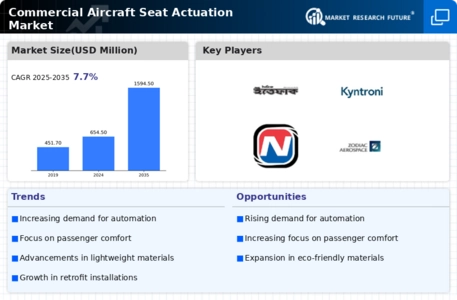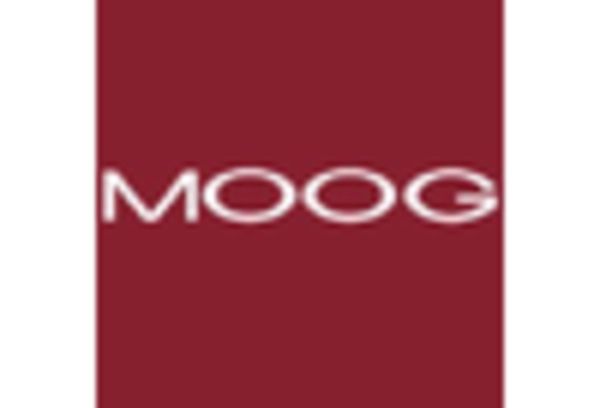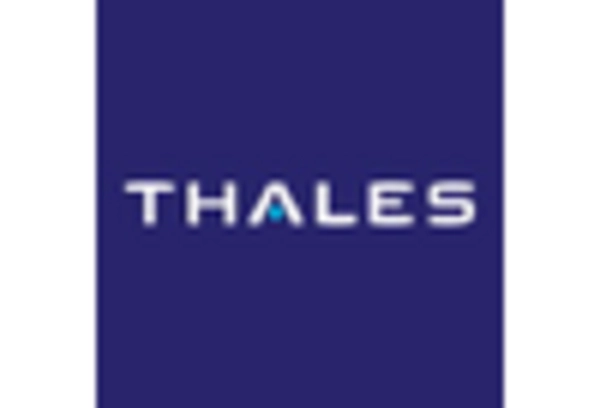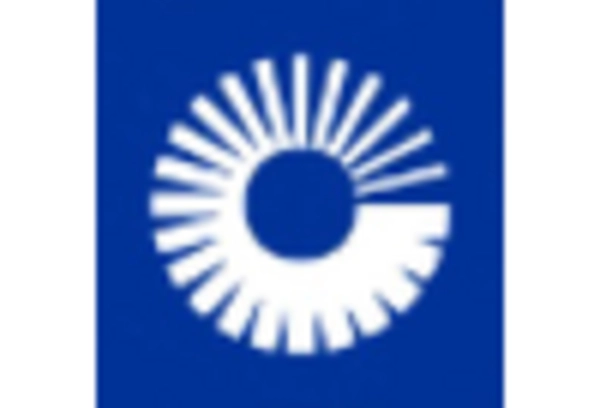Market Analysis
In-depth Analysis of Commercial Aircraft Seat Actuation Market Industry Landscape
The commercial aircraft seat actuation market is a dynamic sector that plays a crucial role in enhancing passenger comfort, optimizing cabin space, and meeting the evolving needs of airlines. Market dynamics in this sector are influenced by various factors that collectively shape its growth and evolution. One of the key drivers is the increasing focus on passenger experience. Airlines realize the benefits of developing a seat that meets passengers’ needs for comfort and preference to fulfilling a demand for high-end seat actuation systems. The systems offer a wide range of seating configurations that meet the needs of various travelers, folding options, and ergonomic adjustments, all aimed at lifting the travel experience.
Technological progressions are a crucial aspect that has a decisive influence on the mechanical actuation market of commercial aircraft seats. Aviation industry continues to explore the best options of improving efficiency and reducing weight; at the same time aviation safety should be enhanced. Immense progress is made in the seat actuators systems utilizing electric actuators, smart sensors, and lightweight materials that permit opening and closing of seats to the desired positions swiftly and accurately.
Enforcement of regulations and safety considerations are important factors that affect the market trends of commercial airplanes' seating actuation. Authorities on aviation stipulate stringent regulations dealing with the safety and reliability of aircraft components, including actuators that control seats. These regulations require players in the market as well as take part in research and development in order to create systems that meets or of exceeds set standards. Markets are influenced by the firms that focus on safety, reliability, and their fulfillment of regulatory requirements.
In the market for the commercial aircraft seat actuation action, aircraft interior trends and design choices are also the inducing factor. Airlines feel more competitive when they make new models of cabin interiors and seating arrangements. In other words, these systems must be multi-functional and adjustable to accommodate different cabin layouts and arrangements. Airline market players possessing various aeronautic seat actuation mechanisms are considered to offer flexibility as well as perfect beauty to satisfy diverse requirements of airlines aiming to provide unique feeling and new look for passengers.
The economic circumstances and volatility of the air transportation business signify the commercial seats actuators market. The economic downturns or changes in air travel demands will in turn influence the decision of airlines in regard to the upgrading or retrofit of the cabin, consequently leading to the market demands for new or replacement seat actuation systems. Market players must stay attuned to economic trends and adapt their strategies to navigate through challenging periods while seizing growth opportunities during industry upswings. Ongoing trends such as the increasing demand in emerging countries and the widespread acceptance of electric actuators are anticipated to have a favorable impact on the market throughout the forecast period.

















Leave a Comment